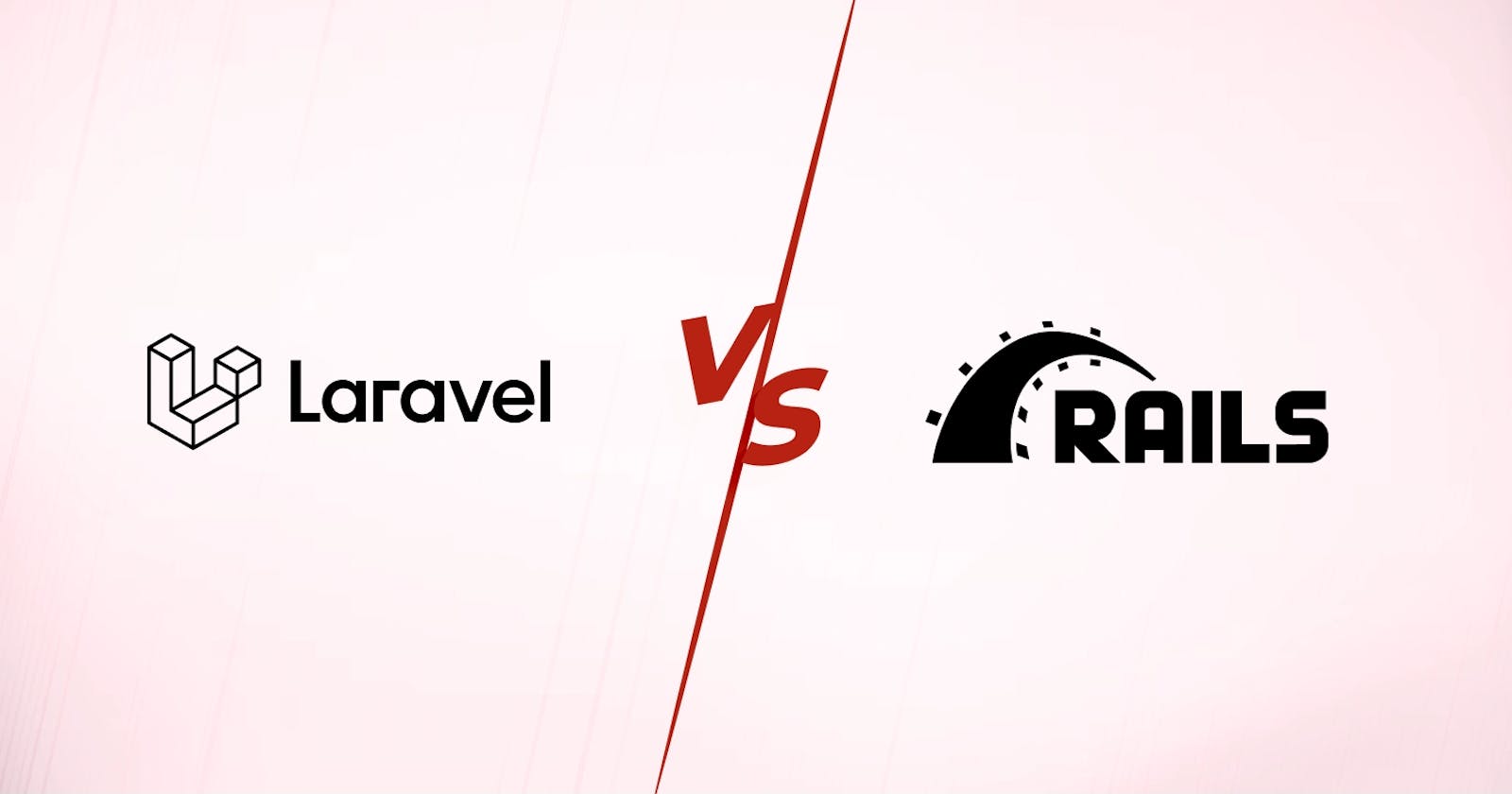Laravel vs. Ruby on Rails: Major Differences Between Popular Backend Framework
When it comes to web development, selecting the right framework is crucial as it lays the foundation for your project's success. Laravel and Ruby on Rails are two prominent frameworks that have gained popularity among developers for building robust, scalable, and maintainable web applications. In this comparison, we will delve into the strengths and weaknesses of both Laravel and Ruby on Rails, helping you make an informed decision based on your project requirements and preferences.
Overview of Laravel and Ruby on Rails
Laravel: Laravel is a PHP-based open-source web application framework that follows the model-view-controller (MVC) architectural pattern. Launched in 2011, Laravel quickly gained traction due to its expressive syntax, powerful features, and an active community. It emphasizes developer-friendly code and supports modern web development practices, making it an ideal choice for building a wide range of applications.
Ruby on Rails: Ruby on Rails, commonly known as Rails, is an open-source web framework built on Ruby programming language. It was released in 2004 and gained immense popularity for its convention-over-configuration principle, which streamlines the development process and allows developers to focus on writing application code. Rails follows the MVC pattern, similar to Laravel, and encourages best practices like test-driven development and continuous integration.
Learning Curve Laravel: Laravel's syntax is considered more accessible to developers who are familiar with PHP, and it provides comprehensive documentation and tutorials. Even developers new to the framework can quickly grasp its fundamentals. The simplicity of Laravel's API and well-organized documentation contributes to a shallower learning curve for newcomers.
Ruby on Rails: While Ruby on Rails is praised for its productivity and elegant code, its learning curve can be steeper for developers who are new to Ruby. Developers with prior experience in object-oriented programming languages may find it easier to adapt, but those coming from different backgrounds might take more time to get comfortable with its conventions.
Performance Laravel: Laravel offers good performance, but it might not match the sheer speed of some other frameworks or languages. However, with proper optimization and caching techniques, Laravel can handle a considerable amount of traffic and deliver responsive applications.
Ruby on Rails: Historically, Ruby on Rails was criticized for its performance, especially when compared to PHP-based frameworks like Laravel. While Rails has made significant performance improvements over the years, it may still face challenges when dealing with extremely high-traffic applications. However, similar to Laravel, smart caching and optimization can enhance the performance of Rails applications.
Community and Ecosystem Laravel: The Laravel community is one of its strongest assets. The framework has a vast and active community of developers, which translates to a rich ecosystem of third-party packages, extensions, and libraries. Laravel's package manager, Composer, makes it effortless to integrate external components into your projects, boosting development speed and efficiency.
Ruby on Rails: Ruby on Rails also boasts a vibrant community and a mature ecosystem. The Ruby Gems package manager simplifies the process of adding functionalities to your application. Rails developers can benefit from an abundance of well-tested gems and plugins, which significantly accelerate the development process.
Scalability Laravel: Laravel is well-equipped to handle small and medium-sized projects, but it might face challenges when scaling up to handle large enterprise-level applications. However, by employing caching mechanisms, database optimizations, and distributed systems, Laravel can achieve a satisfactory level of scalability.
Ruby on Rails: Ruby on Rails has been successfully used to build scalable applications, but it requires careful planning and optimization to handle massive user bases and extensive data processing. When scaling Rails applications, developers often utilize caching, load balancing, and other performance-enhancing techniques to maintain a smooth user experience.
Security Laravel: Laravel prioritizes security and comes with built-in protection against common security threats like cross-site scripting (XSS) and SQL injection. Additionally, the Laravel community is quick to address security vulnerabilities and release updates, ensuring that developers can build secure applications.
Ruby on Rails: Security is a top concern for the Rails framework as well. The community actively monitors and patches security vulnerabilities. Ruby on Rails follows secure-by-default principles, which means developers must explicitly opt for risky behaviors, reducing the likelihood of introducing security holes.
Conclusion
In conclusion, both Laravel and Ruby on Rails are powerful frameworks that can facilitate efficient web development. The choice between the two largely depends on your familiarity with the respective programming languages, the scale of your project, and the specific features you require.
If you prefer PHP and seek a framework with an active community and an abundance of ready-to-use packages, Laravel might be the ideal choice for you. On the other hand, if you enjoy Ruby's elegance and embrace convention-over-configuration, Ruby on Rails may be a better fit.
Ultimately, take into consideration your team's expertise, project requirements, and long-term goals to select the framework that aligns best with your needs. Both Laravel and Ruby on Rails have proven their worth in the industry, and whichever you choose, you're likely to embark on a successful web development journey.
Learn More: https://www.cmarix.com/blog/laravel-vs-ruby-on-rails/
